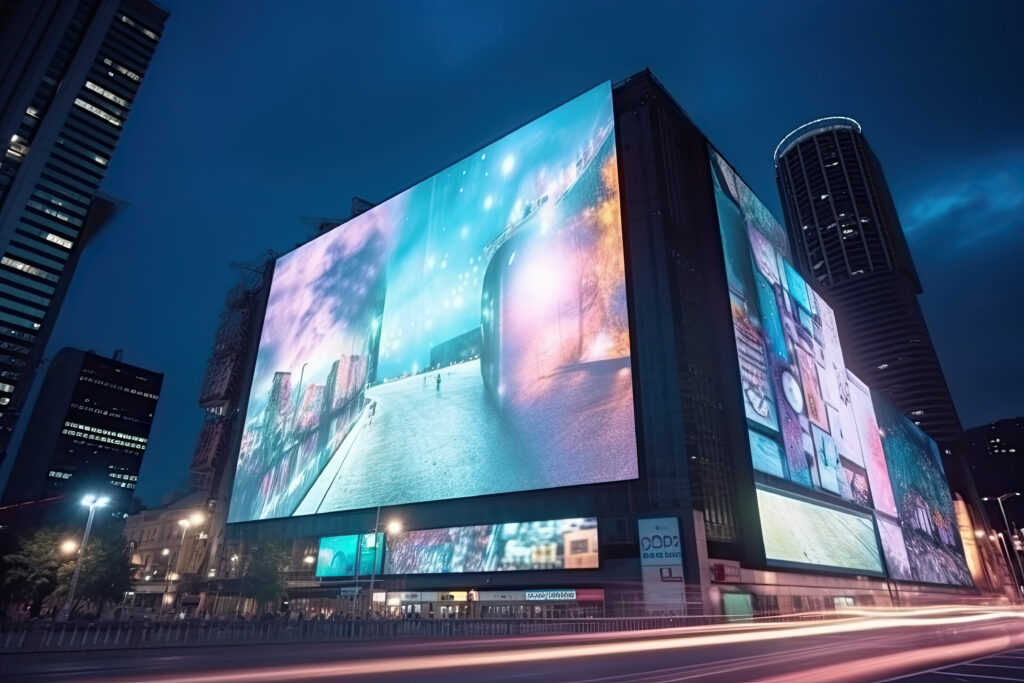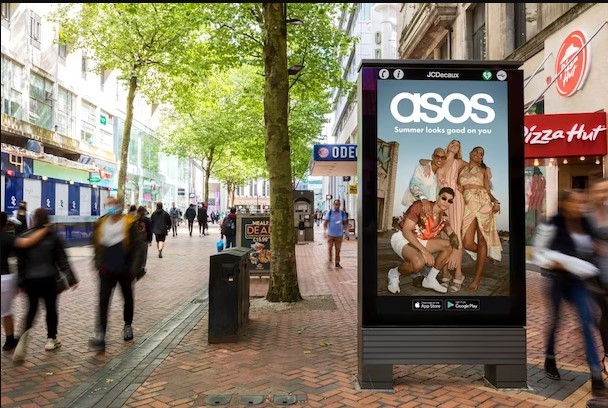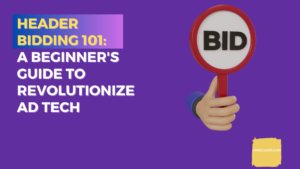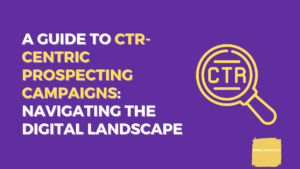What is DOOH Advertising and How Does it Work?

What is DOOH advertising ?
DOOH stands for Digital Out-of-Home. DOOH advertising is a cutting-edge method of broadcasting commercials to the general public via digital screens in public spaces. DOOH ads have risen in popularity because they allow advertisers to more precisely target specific audiences and react to current events than static billboards and traditional OOH mediums.
Advertising strategies in today’s fast-paced, digitally-connected world are always adapting to match the changing needs of customers. Dynamic and creative, out-of-home (DOOH) advertising uses digital billboards to reach large numbers of people in public places. DOOH ads attract consumers’ attention and convey specific messages in a way that was never before possible in crowded public spaces like city streets, shopping centres, and airports.
This blog will go into the nuts and bolts of DOOH advertising, examining the infrastructure and technology behind these attention-grabbing campaigns. We’ll explore the distinctions between these two types of advertisements, as well as between visual and textual advertisements and between interactive and non-interactive encounters. We will also explain how automation and data-driven targeting are changing the face of out-of-home (OOH) advertising.
Our journey through DOOH will also include discussion of the most important indicators for gauging the success of campaigns, allowing you to make informed decisions about how to best use your marketing resources. This blog is written for everyone interested in the future of advertising and marketing, whether they are professionals in the field or just inquisitive about what lies ahead. Let’s take this exciting step into the world of digital OOH advertising together.


Origins of DOOH Systems
The development of out-of-home advertising (DOOH) is an interesting story that has changed and expanded dramatically over time. Although outdoor advertising has been around for centuries, the introduction of digital technology has caused a dramatic shift in the industry. In the early 1990s, the first digital billboards appeared, ushering in the age of digital out-of-home (DOOH) advertising. Slowly at first, the market expanded as more and more advertisers saw the potential of this fresh advertising platform. The popularity of digital out-of-home (DOOH) advertising skyrocketed in the 2000s, propelling the industry into its expansion decade. The value of the digital out-of-home (DOOH) market is projected to reach $14.8 billion by 2022.
What is programmatic DOOH?
If you’re curious about the inner workings of digital out-of-home (DOOH) advertising, look no further than programmatic DOOH. This innovative method of DOOH advertising uses automation and data-driven targeting to get ads in front of the right people. Programmatic DOOH is an online advertising model adapted specifically for digital out-of-home (DOOH) screens.
Ads on digital billboards and other digital out-of-home (DOOH) displays are bought by advertisers using programmatic platforms. Advertising on these sites is highly targeted because of the information collected about users’ demographics, interests, and geographic locations.
Data-driven targeting, real-time bidding (RTB), and programmatic platforms are the backbone of this type of out-of-home advertising. Ad space on digital out-of-home (DOOH) displays can be bought and sold through programmatic platforms, which use audience data to maximise relevance. Ad placements are optimised through RTB by automatically giving preference to the highest bidder in real time. Data-driven targeting is the practise of delivering ads to the most relevant and engaged audiences based on information about those audiences, such as demographics, interests, and past actions.
There are a number of benefits to using programmatic DOOH as opposed to conventional DOOH. It can effectively target specific demographics and reach large numbers of people in high-traffic areas. Furthermore, advertisers can track the efficacy of their programmatic DOOH campaigns by measuring their performance.
Programmatic DOOH advertising is anticipated to become increasingly common as the DOOH market expands. By combining automation with data-driven targeting, marketers can create ads that are more likely to resonate with their intended audience and have a greater impact. Programmatic DOOH advertising is a promising option to investigate if you want to reach a large audience with precise messaging.
How massive is the DOOH market? Market share of DOOH?
Advertisers and consumers alike have taken notice of the rapid expansion of the digital out-of-home (DOOH) advertising market. According to a report by Reportlinker.com, the global DOOH market was worth an estimated $14.8 billion in 2022, and this figure is expected to increase to $25.3 billion by 2027. Doing so on digital screens in real time increases both exposure and interaction, which is why DOOH advertising has been so successful. As a result of rapid urbanisation and economic growth, once-rural areas in developing countries are rapidly catching up to the developed world in this industry. Rising incomes and consumer spending in Asia and the Pacific will drive demand for digital out-of-home (DOOH) advertising. However, the COVID-19 pandemic has had an effect on DOOH advertising, with some markets seeing difficulties in operations and revenues. Despite this, the market is growing due to factors such as the proliferation of displays, the appeal of digital content, and the union of DOOH and user-generated material. Advertisers can tap into the power of technology and creativity to effectively reach their target audience by exploring the DOOH industry’s many formats, verticals, and regional prospects.
Key Pointers:
- In 2022, the worldwide DOOH market was worth $14.8 billion, and by 2027, that number is expected to rise to $25.3 billion.
- While the demand is increasing in developing countries, developed countries have dominated the DOOH market.
- Due to the region’s growing middle class and robust economy, DOOH advertising opportunities in Asia and the Pacific are substantial.
- The DOOH sector has felt the effects of the COVID-19 pandemic in terms of workforce, operations, and revenues.
- The expansion of the digital display market, along with VR/AR and the Internet of Things, is fueling the development of the global DOOH industry.
- The DOOH audience is more likely to interact with and relate to user-generated content.
- Small and medium-sized businesses may find the price tag of implementing DOOH to be prohibitive.
- Billboards, public transportation, street furniture, and location-based media all present unique possibilities for advertisers.
- Real estate, banking, government, and commerce are just some of the industries that have helped drive the expansion of DOOH marketing.
- The market for digital out-of-home advertising (DOOH) is dominated by North America, followed by Europe, Asia/Pacific, and the LAMEA region.
- The DOOH market is dominated by companies like JCDecaux Group and Ströer SE & Co. Companies like KGaA and Clear Channel Outdoor Holdings Inc.
- Partnerships and programmatic offerings are two examples of industry players’ strategies that contribute to market growth and new product development.
How does DOOH advertising function?
DOOH works by distributing advertisements across a system of digital billboards in heavily travelled areas of a city. Because these screens, like TVs and computers, are connected to the internet, advertisers can make instantaneous changes to the advertisements they display. Supporting the technology behind DOOH advertising is specialised software developed for this medium, giving advertisers greater control over the creation, management, and monitoring of their campaigns.
Let’s dissect the process of digital out-of-home media (DOOH) into its constituent parts:
- Digital Displays: Large, high-resolution digital displays are essential to DOOH because they can attract viewers from far away. These screens are placed in high-traffic areas, such as streets, malls, airports, and public transportation hubs, to maximise their potential for exposure.
- Internet Connectivity: To facilitate interaction between advertisers and displays, digital billboards used in DOOH campaigns are online-connected. This connectivity allows for instantaneous content modifications and updates.
- Targeted Content:Using data such as age, gender, income, location, interests, and even time of day and weather, advertisers can create targeted content that is more likely to attract the attention of their intended audience. DOOH campaigns that use targeted content to engage viewers and deliver personalised messages are more likely to succeed.
- Software Management: DOOH advertising runs on software developed specifically for this medium, so software management is essential. This programme is utilised by advertisers in the development and administration of campaigns, the scheduling of ad rotations, and the monitoring of ad performance.
- Real-Time Updates:Due to DOOH’s adaptability, advertisers can instantly update their campaigns. Because of this adaptability, they can improve their campaigns based on actual results and reach their target audience with timely, relevant messages.
Top DOOH DSPs
Several Demand-Side Platforms (DSPs) stand out as top choices for advertisers seeking effective and efficient campaigns in Digital Out-of-Home (DOOH) advertising. These DSPs compete fiercely for advertisers’ DOOH advertising needs, and each offers something special. Advertisers can pick the DSP that works best with their strategies and target audiences based on the needs and objectives of each individual campaign. Let’s take a look at some of the best DSPs for DOOH, which are becoming increasingly important as the DOOH market expands. These DSPs provide advertisers with useful tools for creating dynamic, data-driven DOOH campaigns.
Google Display & Video 360: One of the most popular demand-side platforms, it provides extensive help for digital out-of-home advertising. It’s easy to set up and use, and it works in tandem with other Google advertising products like AdWords and Analytics to give marketers access to Google’s wealth of information for more targeted DOOH campaigns. If you want to leverage Google’s tools to improve your DOOH strategies, this DSP is a great option.
Amazon Demand-Side Platform (DSP): Another major player, Amazon DSP is making waves with its comprehensive features and DOOH advertising support. Being integrated into the Amazon platform provides advertisers with access to a sizable and active user base. Amazon DSP is a great choice for brands that want access to Amazon’s massive customer base.
Adform: Adform is a prominent European DSP that offers support for DOOH campaigns, and it is known for its strong data capabilities and audience targeting capabilities. It enables marketers to more precisely target their messages to specific demographics and interests. Adform is a good option for those in search of data-driven DOOH strategies.
Simpli.fi: U.S.-based DSP Simpli.fi receives high marks for its intuitive interface and pinpoint audience targeting. Advertisers who want to simplify their DOOH campaigns at a low cost will find Simpli.fi to be a viable option.
What are the various DOOH creatives?
Advertisers now have more tools at their disposal than ever before to create campaigns that resonate with their target audience thanks to the adaptability of DOOH creatives. Let’s investigate the many facets of this adaptability:
Static vs. Dynamic: DOOH creatives can be classified as either static or dynamic. Traditional digital out-of-home (DOOH) ads are static creatives, which don’t change at all during the campaign. Dynamic creatives, on the other hand, are flexible and can be adapted to various contexts, including time of day, weather, and the characteristics of the target audience. Dynamic creatives benefit from being able to cater their content to each individual viewer, making them more impactful.
Visual vs. Text-based: DOOH creatives can be image- or video-centric to grab viewers’ attention more quickly than text-based creatives. In contrast, the success of text-based creatives hinges on the use of powerful, yet succinct, language. Text-based creatives are more effective at conveying complex or informative messages, while visual ones are better at grabbing attention.
Interactive vs. Non-interactive: Digital out-of-home (DOOH) advertisements can be either interactive or static. By encouraging users to interact with the ad in some way, such as by clicking or swiping, interactive creatives can help brands build stronger relationships with their target audiences. Non-interactive creatives do not require participation from the audience but can still convey the intended meaning. Interactive creatives increase participation but may cost more to produce.
Aesthetic Elements: Colour, typeface, and layout are just a few examples of the aesthetic elements that DOOH designers can use to great effect when crafting engaging visual stories. The ability of an advertisement to attract attention and make an impression on its target audience is greatly influenced by the aesthetic choices made.
How do we evaluate the success of digital out-of-home (DOOH) campaigns? Merits for Digital Out-Of-Home Ads(DOOH)?
Understanding how well your DOOH (Digital Out-of-Home) advertising efforts are resonating with your target audience and accomplishing your campaign goals requires measuring their efficacy. Some of the most popular and cutting-edge indicators of DOOH campaigns’ success are as follows:
- Reach:How many people were exposed to the DOOH advertisement. It reveals how many people might see the advertisement.
- Frequency: How often people were exposed to the DOOH advertisement. The frequency with which an advertisement is viewed is tallied.
- Impressions:Total number of times a digital out-of-home (DOOH) advertisement was seen. This figure indicates the extent to which the advertisement was seen.
- Engagement: Interaction with a digital out-of-home (DOOH) ad, such as a click or a scanned QR code, is measured by engagement. How actively the audience is engaged can be gauged from this.
- Conversion: Conversion rate: the percentage of people exposed to a DOOH ad who went on to complete the desired action (visit a website, make a purchase, etc.). This indicator measures how effective the campaign was in inspiring target behaviours.
Modern Measures:
- Eyeballs: A measure of how many people saw the DOOH advertisement. This is a subset of opinions that is concerned with how things are actually seen.
- Attention: How Long Viewers Spent Looking at the DOOH Ad. This metric represents how involved and enthusiastic a person is.
- Recall: How well people can recall the DOOH advertisement after seeing it. It’s useful for gauging how well people can remember the brand after seeing the ad.
- Arousal: Arousal is a quantitative indicator of how much the DOOH ad affected the audience’s emotions. It’s an indicator of how the ad manages to make people feel.
Tips for Assessing Performance:
- Use Multiple Metrics: Consider Using Several MetricsTo Fully Understand Campaign Performance, It Is Advised That a Number of Metrics Be Employed.
- Track Results Over Time: Consistently monitor and assess campaign outcomes for insights into how to improve future efforts.
- Compare to Industry Benchmarks: You can evaluate your campaign’s success in comparison to others by looking at how it fares against industry benchmarks.
- Integrate New Metrics: Newer metrics, such as attention, memory, and arousal, should be incorporated in order to gain more in-depth understandings of audience engagement.
- Set Clear Goals: Define Your Objectives Clearly Before Beginning Your CampaignIt is essential to define your campaign’s objectives in advance.
- Use Data from Various Sources: To get a complete picture, it’s important to compile data from a number of different channels, such as surveys, mobile location data, and anonymous video analytics.
- Optimize and Adapt: Use the data collected from your DOOH campaigns to fine-tune them and make informed decisions about how to enhance them in the future.
Advertisers can improve their DOOH campaigns by using these metrics and insights to better understand audience behaviour and craft more effective ads. Successful DOOH campaigns rely on constant measurement and data-driven optimisations to reach their full potential.
In conclusion, digital out-of-home (DOOH) advertising provides a potent and adaptable means of disseminating messages to a wide demographic. Ad agencies and brands are gravitating towards DOOH as a result of its cutting-edge tech, programmatic abilities, and robust measurement tools.






